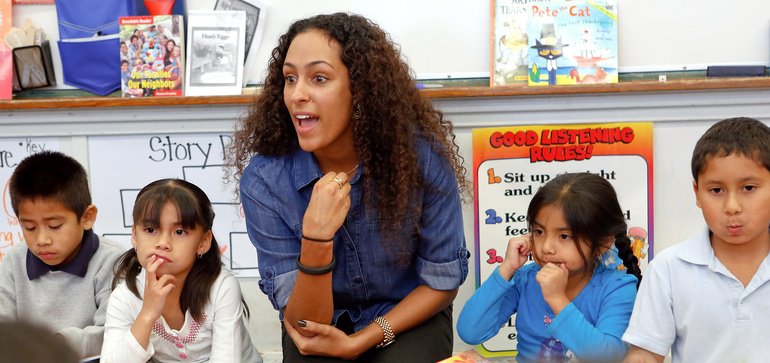
Share On Social!
Currently, 1 in 4 kindergartners nationwide are Latino. By 2050, that number will be 1 in 3. Latinos are the fastest-growing population in the country and they are also becoming the youngest.
However, many disparities in education exist between Latinos and other races and ethnicities. A new report from the Child Trends’ Hispanic Institute uncovered some alarming findings regarding Latino kindergartners and their math skills.
According to the report, Latino students, on average show up to their first days of school three months behind their white peers when it comes to their mathematics abilities. While they “make up ground” throughout the school year, the achievement gap remains because they start so far behind.
“One of the best ways to not be behind the starting gate at the beginning of kindergarten is ensuring that we expand and continue to fund high-quality early childhood programs,” said Lina Guzmán, director of the Child Trends’ Hispanic Institute in an interview with EducationDIVE.
In order to reduce health disparities, it is critical to address inequities in programs, practices, and policies. Join our site, connect with others, and get involved.
The report, entitled “Make Math Count More for Young Latino Children,” determined this gap in math skills by studying math scores among Latinos. The study also determined that poverty was the chief reason why Latino math scores were lower than their white peers. Another factor was having parents that did not have “post-secondary education and living in a home where English [was] not the primary language spoken.”
Another factor is the language barrier. Many Spanish-only speaking students might be able to have all the same math skills as English-speaking students, but might be overlooked due to language. The report found that bilingual students may be in a better position to excel in math.
“Bilingual children may have an advantage in learning mathematical concepts because, having terms for them in two different languages, they can appreciate that mathematical ideas are abstract, not restricted to a specific terminology,” the paper reads.
The report offers several recommendations for school districts, including paying attention to the unique needs and circumstances of bilingual students and promoting teacher instruction to align with students’ cultural backgrounds.
“We know the jobs of today and those of the future are going to require STEM skills,” Guzmán said, who was also the co-author of the report. “If we want a workforce that can meet the demands of today and future jobs, we need to better prepare students for STEM, and early math is a critical part to doing so.”
Read more about this story here.
Read stories similar to this one:
- New outreach efforts are being explored to reach Oregon’s growing #Latino population. #SaludAmerica #HealthEquity salud.to/2lsRyMO
- New report highlights community involvement in creating #HealthEquity. #SaludAmerica salud.to/2krop3Z
By The Numbers
84
percent
of Latino parents support public funding for afterschool programs




